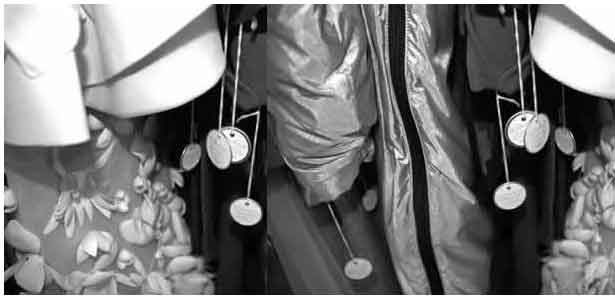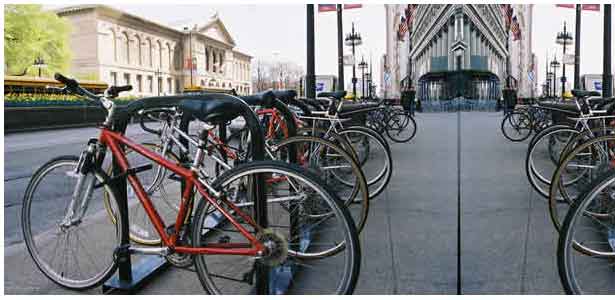
by Murphy Dunn
Curiosity, that overwhelming bug whose bite encourages our desire for knowledge, also possesses a rich mythical history linking it to overindulgence, deception, and delinquency. The serpent tweaked Eve’s inquisitive nature in the Bible with the allure of Adam’s apple. Sin arrived. In Pandora’s Box the Greek gods created Pandora to entice, betray, and expose man to harm with her pristine beauty as well as the beckoning of her bewitching box. Poor Pandora, possessed by her own inquisitiveness, unleashed the first evil spirits into the world when she opened the lid herself. In both cases, the stories characterize curiosity with secretiveness, danger, and harmful consequences.
What about the link to knowledge that characterizes curiosity? What about the desires that are realized as a result of investigation? Many times, in mythmaking as well as commonly used contemporary idioms such as “curiosity killed the cat,” the knowledge factor gets overshadowed with negative consequences. Recent visits to SAIC’s Fashion Resource Center (FRC), sparked my quest into the roots and reputation of inquisitiveness. Tucked away on the 10th floor of the school’s Sharp Building, the FRC houses a well-honed reference collection catering to the scholarly studies of late 20th and 21st century avant-garde dress. FRC Director and Adjunct Professor, Gillion Skellenger-Carrara, founded the FRC in 1987 with her colleagues from the school’s Fashion Department to provide hands-on material for the academic endeavors of SAIC’s community, as well as the general public. During my varied series of visits to the FRC, I was continuously captivated by the interrelationship of academic scholarship and the dreamlike fascination that fueled it. A display case featuring Vivienne Westwood’s trademark lace-up platforms in turquoise, grape, and gold patent leather–with an outrageous leopard print heel for good measure–announces the entrance to the FRC.
On one particular visit inside the well-lit corner room, a class of fashion illustration students gathered around the central table as Gillion provided a customized tour of the collection. One student, clad in an indigo Balenciaga v-neck sweater, places his Louis Vuitton duffle aside to dreamily run his fingers down oversized rounded pleats on an ivory Issey Miyake column dress. A series of coos and delighted gasps erupt as Gillion displays vintage illustration books from London. Two students squat down below the DVD player to gain access to the publication called Visionaire. Each issue takes a unique design format reflecting themes such as “Comme des Garçons,” “Desire,” “Deck of Cards,” and “The Emperor’s New Clothes.” The “Vreeland Memos” catches my eye with its slick box encased in the trademark red of legendary fashion editor and curator, Diana Vreeland. Gillion reports the Resource Center’s subscription to Visionaire was recently discontinued due to the pricey premium (one year costs over $600). As with any reference collection, funding is always an issue. Generous private donations of money, garments, publications, and videos from individuals as well as a yearly allotment of money from the school nourish the FRC.
The well-honed closets particularly impress. They consist of garments and accessories catalogued by designer. Specialties include pristine condition pieces by Japanese and Belgian avant-garde designers such as Yohji-Yamamoto, Issey Miyake, A.F. Vandevorst, Comme des Garçons, Martin Margiela, and Junya Watanabe. “We seek out only the very best garments and accessories from significant periods in a designer’s career,” Gillion tells me as we explore the closets on another afternoon. She pulls out a pearly white Vivienne Westwood corset as an example from the Resource Center’s growing lingerie collection. “Oh, and you must see the Westwood ‘Fanny Knockers’!” she exclaims with effortless enthusiasm. Out comes a black bustle from behind the sliding doors. She places it in my hands so that I may see how its soft layers will knock together against an individual’s buxom backside as he or she struts down the street.
During the illustration class’s preview, Gillion’s Costume National shoes head toward the white steel shelves that hold the books, magazines, and videos. She luxuriously says, “I invite you to browse the shelves of books, catalogues, and magazines. Find a title or cover that intrigues you. We have books on the sociology of dress, fashion and art exhibition, military dress, fashion and technology…” The titles Sex and Suits, Jocks and Nerds: Men’s Style in the 20th Century, Animals and Armor, Chic Savages, Waist Not: the migration of the waist 1800-1960, and Fashion is Spinach catch my eye.
Gillion points behind the FRC volunteer, the sleeve of her intricately pleated black and gunmetal silver Issey Miyake shirt grazing the collection of fabric swatches. “Here we have fashion encyclopedias and books dedicated to specific individuals of fashion for your reference needs. Moschino. Yves Saint Laurent. Versace.” All this she announces with an alluring roll of her R’s. She launches into the descriptions of runway videos and fashion-related films. We click on the William Klein film Mode in France, a series of live action fashion photography spreads from the eighties–a true exhibitionist indulgence. Imagine activating scenes from Vogue magazine. Models slouch about striking slinky poses in Azzedine Alaia and Jean Charles de Castelbajac garments. The beauty of watching this activation of fantasy in the FRC is the fact that then you can slide open a closet door and examine the construction of a real Alaia dress.
In The Poetics of Space, Gaston Bachelard’s examination of how we psychologically inhabit and experience space, he describes the opening of an enclosed space as an image, a representation of “hesitation, temptation, desire, security, welcome and respect.” Gateway objects like drawers, doors, wardrobes, and chests invite an interaction–the opening or entrance–that reflects our curiosity for the unknown. He says, “If one were to give an account of all the doors one has closed and opened, of all the doors one would like to re-open, one would have to tell the story of one’s entire life.”
Last year in correlation with the FRC’s 17th anniversary, a group of graduate students from SAIC’s arts administration department opened the Resource Center’s doors and drawers to curate the exhibition Social Seduction. Utilizing garments from the FRC and work from an open call to artists, the exhibition addressed fashion’s dialogue with and reflection of society. In the delicious catalog for the show, the curators’ essay “Open to Seduction” describes their own curious venture into unknown territory. “As we peered into the closets of the School of the Art Institute of Chicago’s Fashion Resource Center’s collection, it was as if we had discovered a treasure chest full of glamour, glitz, and innovation manifested in a collage of fabrics and designs from around the world.”
On display at The Betty Rymer Gallery, Social Seduction included alumni Gary Graham’s distressed burgundy corset, intricately patterned in velvet, which revealed the historical influence of lingerie in contemporary design. Similarly, one of Jean Paul Gaultier’s Lycra dresses in peach, made famous by Madonna, stood tall, representing society’s obsession with sex, lingerie, and all things pop culture. A.F. Vandevorst’s daring black lace-up blouse–complete with horse hair spewing from the sharp lace-up back–challenged notions of traditional riding attire using tight design and humor.
The catalog, still available from the FRC and the Betty Rymer Gallery, includes essays and interviews by heavy-hitting curators, critics, designers and academics including Andrew Bolton, Associate Curator of The Costume Institute of The Metropolitan Museum of Art; Lisa Lenoir, Fashion Editor for The Chicago Sun-Times; and SAIC Adjunct Associate Professor and member of Goat Island performance group Matthew Ghoulish. They addressed varying themes interwoven in the exhibition. The underlying thread throughout was the eccentric, fantastical, and the daydreaming–elements that characterize an overarching sense of curiosity–made possible using the realities tucked away within the closets and shelves of the FRC. Therefore, I conclude that curiosity got framed. Fate, unfortunate timing, lack of intelligence–pick what you will–killed that cat. However, somewhere along the way, curiosity picked up the naughty rap sheet. A well-heeled visit into the FRC will dispel the negative myths.
Photos by Dana Tashima
May 2005






